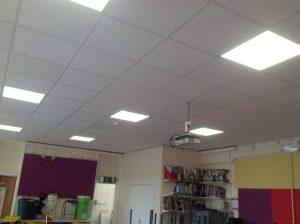
Infrared – the future for heating?

Since the introduction of ESOS, companies have become increasingly more conscious about lowering their carbon footprint and sourcing sustainable ways to make their buildings more energy efficient, whilst trying to keep expenses to a minimum. One of the biggest users of energy in a commercial building and, in turn, money, is a heating system. Here, Michael Fereday at Rexel advises on the best way to cut the annual heating bill by switching to far infrared heating.
Where traditional electrical heating systems use energy to heat up the air in a room, infrared heaters work in a similar way to the sun’s beams to penetrate and heat up the thermal mass of a room, including a building’s infrastructure and the objects in a room. These items then release warmth into the air over a longer period of time, creating a consistent and steadier heat source. In this way, loss of heat through ventilation – a common issue with conventional electrical heaters – is much less of an issue.
What’s more, infrared heating can also offer other benefits such as damp and mould reduction, and even help lessen the transfer of dust and allergens as, unlike conventional heaters, there is far less movement of air. This feature could save more money on water damage repairs and lessen the chances of allergen-borne illnesses.
With an infrared heating system, business owners could be using up to 60% less energy than traditional methods of heating, benefiting both their heating bills and the environment.
For further information please visit www.rexelenergysolutions.co.uk

 Welcome to the UK Site
Welcome to the UK Site